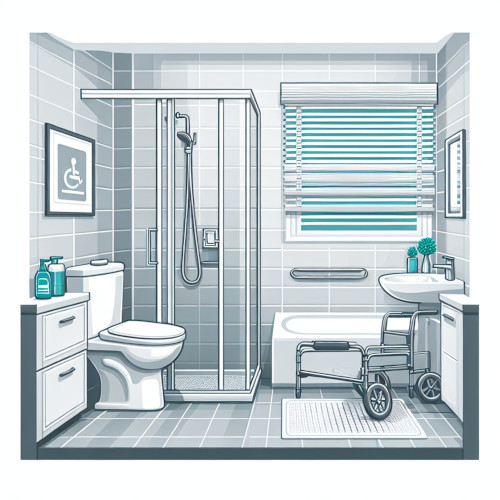
Are All Nursing Homes Equal? How to Compare to Find the Best Fit
Choosing the right nursing home requires careful consideration of various factors, including quality of care, staff qualifications,...
Posted by

As we or our loved ones age, creating a safe, comfortable, and accessible living space becomes increasingly important. Making a few well-thought-out adjustments to a home can greatly reduce the risk of falls, injuries, and other hazards, ultimately supporting independence and improving quality of life. Here, we'll explore essential modifications to help create a senior-friendly environment that promotes both safety and comfort. This guide covers important areas of senior care, elder care at home, and senior living, offering practical tips and actionable steps.
Aging in place is a goal many seniors share; however, homes are not always designed with the mobility limitations and health concerns of older adults in mind. As we age, physical changes—such as decreased strength, balance issues, and vision loss—can make once-safe environments hazardous. Falls, in particular, are a leading cause of injury in older adults, but they're often preventable with the right home modifications.
Creating a safe living space allows seniors to maintain a sense of independence and dignity. It can also bring peace of mind to family members and caregivers, knowing that a loved one's home has been optimized to reduce risks. Below, we'll go through key areas to focus on for safety improvements.
One of the first steps in making a home safer for seniors is improving accessibility and minimizing risks of falls, as falls account for a significant portion of senior injuries. Here's how to make some simple but effective modifications:
The bathroom is often cited as one of the most hazardous rooms for seniors due to the high risk of slips and falls on wet surfaces. Making a few thoughtful adjustments here can significantly enhance safety.
The living room and bedroom are spaces where seniors spend a significant amount of time, so ensuring these areas are safe and comfortable is crucial. Here are some simple modifications that can help:
The kitchen is another area that may require adjustments to ensure safety, as it contains sharp objects, hot surfaces, and potential slip hazards. Here are a few ways to make the kitchen safer for seniors:
Creating a safer home environment for seniors doesn't require a complete overhaul; in fact, small, strategic changes can make a significant difference. By reducing tripping hazards, enhancing bathroom and kitchen safety, simplifying navigation in living areas, and improving accessibility throughout the home, seniors can enjoy a higher degree of comfort and independence.
Ultimately, these modifications serve as investments in peace of mind, benefiting not only seniors but also their families and caregivers. Taking the time to assess and address safety concerns at home can prevent accidents, support independence, and foster a sense of security.

Choosing the right nursing home requires careful consideration of various factors, including quality of care, staff qualifications,...
Posted by

When comparing nursing homes, families should ask a series of key questions about certification, quality of care, safety, and cost. This...
Posted by

Recognizing elder abuse and acting swiftly are critical steps toward ensuring the safety and well-being of our aging loved ones. Regular...
Posted by